Unilever has switched its Carte D’Or ice cream brand in the UK to paper-based packaging from Huhtamaki. With this, the company aims to save more than 900 tonnes of new plastic every year in the UK. Whether the paper container is really more sustainable than the previously used plastic packaging remains an open question and has caused discussion on social media.
The paper for the new packaging produced by Huhtamaki comes from sustainably managed forests and is PEFC certified (Programme for the Endorsement of Forest Certification). According to the manufacturer, both the cup and the lid can be recycled with normal household paper. But even this paper solution cannot do without a proportion of plastic. An inner coating is supposed to ensure that the taste and quality of the product are not affected after conversion and that the packaging also remains stable and durable. While the thin coating should not affect recyclability, an additional plastic seal on the lid is currently not recyclable, the company says. However, a team of experts is already working on the conversion to a fully recyclable solution.
Paper packaging has been gaining ground in the food sector for several years now. While experts from industry, politics and science are critical of the trend towards substituting pure plastic packaging with paper composites, consumers are happy to buy products packaged in paper. Last year, a study by the Gesellschaft für Verpackungsmarktforschung (GVM) (Society for Packaging Market Research) investigated how the switch from plastic packaging to paper composites affects the circular economy. The material mix of paper and plastic is often advertised as „less plastic“, suggesting to the consumer that it is particularly environmentally friendly. According to the GVM study, however, the increasing share of material-mix packaging often causes problems when it comes to recycling, despite the high fibre content of usually over 70 per cent. It is particularly regrettable when plastic packaging that can be recycled well is replaced.
Criticism of replacing recyclable packaging
In a reaction to the report in packaging journal, the packaging consultancy, FuturePackLab, a network of researchers, brand experts, designers, material and packaging technicians and lawyers, writes that the role model function of a company like Unilever is problematic in this respect. A report like the one from Carte D’Or suggests that such a change is the way to achieve more sustainable packaging. Start-ups, in particular, often rely on the big players and also make paper their preferred packaging solution.
The Carte D’Or report has provoked further critical reactions. One follower on LinkedIn writes that a recyclable PP packaging was replaced by a paper composite packaging for marketing reasons. Another says that 93 per cent less plastic sounds great at first, but it means: paper/plastic composite with seven per cent plastic. What matters most is which streams are used to collect such packaging. Because whether it is collected in the blue or yellow bin determines the next recycling step. Another reader says: „The only thing that helps here is consistent education. Unfortunately, it will probably be difficult to reach as many consumers with appropriate campaigns as Unilever did with their misleading Less Plastic declaration.“
A longer comment comes from Tilisco packaging expert, Sonja Bähr: „The attentive reader may have missed the fact that this packaging is used in the UK. Since 1 April, a plastic tax of 200 GBP has been levied in the UK on plastic packaging that does not contain at least 30 per cent recycled material and is either manufactured in the UK or imported into the country. With this solution, Unilever saves itself the plastic tax, as the company cannot prove a 30 per cent recycled content with the polypropylene box. Saving plastic is Unilever’s stated goal, so they can tick that box. „As far as the recyclability of paper-based composites is concerned, the better the plastic layer can be detached from the cardboard in the pulp, the better the pure fibre yield.” Says Sonja Bähr. „With about seven percent plastic content, this is at least a smarter solution in terms of good recycling than all the functional papers or barrier papers that are currently being used to replace plastic bags for Smarties and Ritter Sport, for example. Here, a large part of the polymers goes with the fibre into the recyclate during recycling and has a quality-reducing effect.“
The demand for plastic-free packaging solutions continues unabated despite all the criticism. Manufacturers are responding: Huhtamaki recently announced the conversion of its German Alf site from plastics to Smooth Moulded Fibre (SMF) products. The automated production facility is expected to produce up to 3.5 billion fibre products annually and would be the first large-scale production facility of its kind in Europe.
More packaging news
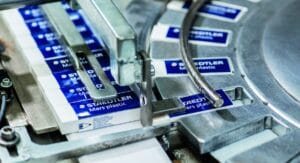
A contract with a handshake is valid
Managing director Tina Gerfer of Wilhelm Rasch Spezielmaschinenfabrik has modernized the company and successfully guided it through difficult times.
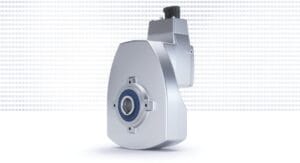
Asynchronous servo solutions for the packaging industry
From primary packaging to final packaging, electric drives play an important role. With a broad portfolio, Nord Drivesystems supports customers.
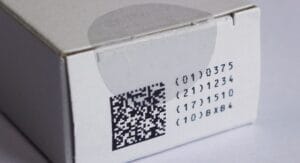
Label Durability
Labels offer many functions which can get lost due to label removal. PTS assesses labels and cardboard for durability and tamper evidence.
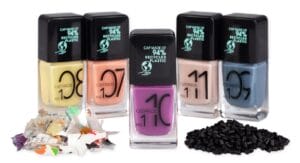
More design for recycling for cosmetics packaging
Packaging for decorative cosmetics is very special. The Forum Rezyklat calls for the recyclability of packaging to be taken into account when designing it.
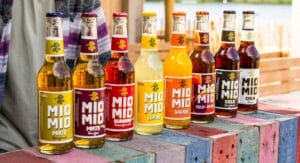
Innovation Barometer 2024
According to a survey conducted by Aktionsforum Glasverpackung 2024 is set to be a highly innovative year for glass packaging.
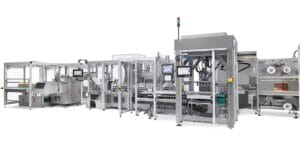
Flexible packaging system for natural cosmetics
Sustainability is part of Weleda’s identity. IWK is also contributing to this with its new flexible packaging line for many natural cosmetic products.



